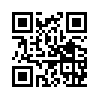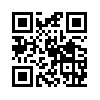Key Takeaways
- Research in psychology can be described by a simple cyclical model. A research question based on the research literature leads to an empirical study, the results of which are published and become part of the research literature.
- The research literature in psychology is all the published research in psychology, consisting primarily of articles in professional journals and scholarly books.
- Early in the research process, it is important to conduct a review of the research literature on your topic to refine your research question, identify appropriate research methods, place your question in the context of other research, and prepare to write an effective research report.
- There are several strategies for finding previous research on your topic. Among the best is using PsycINFO, a computer database that catalogs millions of articles, books, and book chapters in psychology and related fields.
- Research questions expressed in terms of variables and relationships between variables can be suggested by other researchers or generated by asking a series of more general questions about the behavior or psychological characteristic of interest.
- It is important to evaluate how interesting a research question is before designing a study and collecting data to answer it. Factors that affect interestingness are the extent to which the answer is in doubt, whether it fills a gap in the research literature, and whether it has important practical implications.
- It is also important to evaluate how feasible a research question will be to answer. Factors that affect feasibility include time, money, technical knowledge and skill, and access to special equipment and research participants.
- A theory is broad in nature and explains larger bodies of data. A hypothesis is more specific and makes a prediction about the outcome of a particular study.
- Working with theories is not “icing on the cake.” It is a basic ingredient of psychological research.
- Like other scientists, psychologists use the hypothetico-deductive method. They construct theories to explain or interpret phenomena (or work with existing theories), derive hypotheses from their theories, test the hypotheses, and then reevaluate the theories in light of the new results.
- Variables vary across people or situations and may be quantitative (e.g., age) or categorical (e.g., course subject).
- A sample is a small subset of a larger population that is selected to participate in the research study. There are many different ways of sampling participants including convenience sampling and simple random sampling.
- Experimental research involves manipulating an independent variable to observe the effects on a measured dependent variable while non-experimental research involves measuring variables as they naturally occur (i.e., without manipulating anything).
- Research can be conducted in the field or the lab. Laboratory experiments tend to have high internal validity (allowing us to make strong causal conclusions), while field studies often have more external validity (allowing us to generalize to the real world).
- The mean, median, and mode are measures of central tendency used to describe the typical, average, or center scores in a distribution. The range, standard deviation, and variance are measures of how dispersed or spread apart the scores are. Measures of central tendency and dispersion are important descriptive statistics.
- Inferential statistics allow researchers to determine whether their findings are statistically significant, that is, whether they are unlikely to be due to chance alone and therefore are likely to represent a real effect in the population.
- Since statistics are probabilistic in nature we never know if our conclusions are correct. We can make type I errors (concluding an effect is real when it is not) or type II errors (concluding there is no effect when there actually is a real effect in the population).
- Theories can be supported by not proved. Similarly, disconfirming a hypothesis does not necessarily mean that theory has been disproved.
- The final step of the research process involves reporting results at scientific conferences, in journal articles, and/or in books.
Exercises
- Practice: Find a description of an empirical study in a professional journal or in one of the scientific psychology blogs. Then write a brief description of the research in terms of the cyclical model presented here. One or two sentences for each part of the cycle should suffice.
- Watch the following TED Ed video, in which David H. Schwartz provides an introduction to two types of empirical studies along with some methods that scientists use to increase the reliability of their results:
- Reading in print? Go to https://youtu.be/GUpd2HJHUt8 or scan this QR code with your phone:

- Reading in print? Go to https://youtu.be/GUpd2HJHUt8 or scan this QR code with your phone:
- Practice: Use the techniques discussed in this section to find 10 journal articles and book chapters on one of the following research ideas: memory for smells, aggressive driving, the causes of narcissistic personality disorder, the functions of the intraparietal sulcus, or prejudice against the physically handicapped.
- Watch the following video clip produced by UBCiSchool about how to read an academic paper (without losing your mind):
- Reading in print? Go to https://youtu.be/SKxm2HF_-k0 or scan this QR code with your phone:

- Reading in print? Go to https://youtu.be/SKxm2HF_-k0 or scan this QR code with your phone:
- Practice: Generate three research ideas based on each of the following: informal observations, practical problems, and topics discussed in recent issues of professional journals.
- Practice: Generate an empirical research question about each of the following behaviors or psychological characteristics: long-distance running, getting tattooed, social anxiety, bullying, and memory for early childhood events.
- Practice: Evaluate each of the research questions you generated in Exercise 2 in terms of its interestingness based on the criteria discussed in this section.
- Practice: Find an issue of a journal that publishes short empirical research reports (e.g., Psychological Science, Psychonomic Bulletin and Review, Personality and Social Psychology Bulletin). Pick three studies, and rate each one in terms of how feasible it would be for you to replicate it with the resources available to you right now. Use the following rating scale: (1) You could replicate it essentially as reported. (2) You could replicate it with some simplifications. (3) You could not replicate it. Explain each rating.
- Practice: Find a recent empirical research report in a professional journal. Read the introduction and highlight in different colors descriptions of theories and hypotheses.
- Practice: Using the research article you found in a professional journal identify whether the study was experimental or non-experimental. If it was experimental identify the independent and dependent variables.
- Practice: Using the research article you found in a professional journal identify which descriptive statistics were reported.
- Practice: Describe why theories can be supported but not proved.
